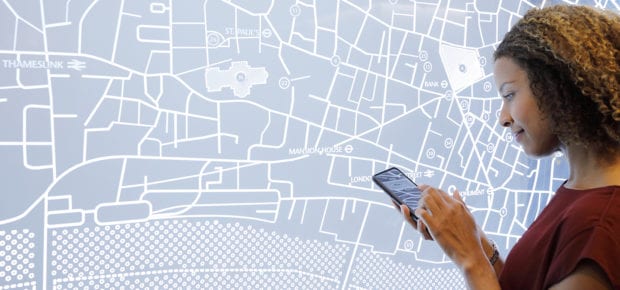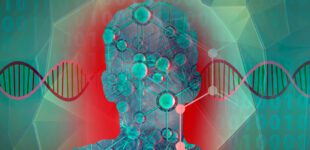October 1, 2019
Whether you know it or not, the fourth industrial revolution – nicknamed Industry 4.0 – has already begun. Automation, or the process of a computer performing the tasks and reasoning of a human being, is leading the forefront of technological advances that will impact how we live and work daily. We sat down with Lee Coulter, IEEE Working Group Chair on Standards for Intelligent Process Automation, to learn more about some of the automation tools and processes changing our lives, and the importance of systemizing guidelines to become a fully digitization of human work.
IEEE: Why is automation considered the fourth industrial revolution?
Lee Coulter: Compared to the first industrial, second industrial and third industrial – which was the computer or information age–, the fourth industrial revolution is the digitization of work. I tell people that, when you get into task automation, you’re actually taking your first baby steps into digital transformation and you’ve entered the fourth industrial revolution. Several things are converging that make this possible. The cost of computing is effectively zero, and the cost of data storage today is effectively zero as well; it’s only going to keep getting cheaper. Our ability to collect the data necessary to create data models that can provide intelligent orchestration of digitized work are made possible. What started as simple task automation is rapidly moving to intelligent automation that is fundamentally transforming work. There are whole functions of business performed by people today that just won’t exist in 10 years.
Robotic process automation and robotic desktop automation are unrecognized by many as the first step in that digital transformation of work, because now we’re actually using the activity of intelligent automation to take us to an end-to-end process with sophisticated tools like machine vision and machine speech. The kinds of work that people have said, ‘you’ll never be able to do that with a computer’–people are actually doing it with computers now.
IEEE: As it relates to Innovation in Infrastructure, what are the sectors most likely to be impacted by automation?
LC: The shipping industry is an excellent example of the shifts changing infrastructure and supply chain management, and what process automation has done for ports is pretty remarkable. Most people are not aware that while we all talk about self-driving cars, self-driving cargo vessels and boats are out there now.
And with the entrance of 5G, it is going to enable us to bypass the need for cables. So all of a sudden, the IoT revolution occurs. Bridge sensors, as an example, will be able to remotely monitor for bridge stress cracks and the need for service. Manual inspection will become a thing of the past. Several cities in the U.S. are now using traffic cameras, machine vision and machine learning to identify potholes. These systems then automatically schedule repair crews to come out and manage the infrastructure. Parking garages are using cameras to detect how many free spaces are available in real-time and then make that information available to users on an app.
Learn more about the benefits of 5G
IEEE: Why is the IEEE 2755.1 standard so critical at this moment as we enter the fourth industrial revolution?
LC: IEEE 2755.1 is important to the fourth industrial revolution because it is a significantly important step in the digitization of human work predominantly in large enterprises where significant administrative processes are required. In a very short period of time, these new intelligent automation products arrived on the scene. There was no guide on what these products do, how important are the things that it can do or how to measure them. So in this standard, we took the approach of describing what each feature or function is, declaring why it’s important, and then telling the reader how they should approach that feature to determine to what degree it is present and its level of sophistication. IEEE 2755.1 explains intelligent automation products and what they do; accelerating a business’s ability to start digitizing work. This lays the foundation for a road map of more advanced digitization of work where you’re engaging in things like machine vision, natural language processing and machine learning for machine-based decision making to end up with a fully digitized process, or as the popular press describes it, digital transformation. It is not possible to “digitally transform” anything until the work is digitized. Intelligent Automation is the first step to digitizing work that can then be transformed.
IEEE 2755.1 is the first published industry standard that provides in-depth product selection and detail on each feature’s importance to guide large businesses in their selection process of automation platforms. Learn more about IEEE 2755.1 and its guidelines here.






 Meaningful Momentum or Running in Place?
Meaningful Momentum or Running in Place? AI Through Our Ages
AI Through Our Ages Liquid Infrastructure: Our Planet's Most Precious Resource
Liquid Infrastructure: Our Planet's Most Precious Resource The Impact of Technology in 2025
The Impact of Technology in 2025 Quantum and AI: Safeguards or Threats to Cybersecurity?
Quantum and AI: Safeguards or Threats to Cybersecurity? Why AI Can't Live Without Us
Why AI Can't Live Without Us Bits, Bytes, Buildings and Bridges: Digital-Driven Infrastructure
Bits, Bytes, Buildings and Bridges: Digital-Driven Infrastructure Impact of Technology in 2024
Impact of Technology in 2024 Emerging AI Cybersecurity Challenges and Solutions
Emerging AI Cybersecurity Challenges and Solutions The Skies are Unlimited
The Skies are Unlimited Smart Cities 2030: How Tech is Reshaping Urbanscapes
Smart Cities 2030: How Tech is Reshaping Urbanscapes Impact of Technology 2023
Impact of Technology 2023 Cybersecurity for Life-Changing Innovations
Cybersecurity for Life-Changing Innovations Smarter Wearables Healthier Life
Smarter Wearables Healthier Life Infrastructure In Motion
Infrastructure In Motion The Impact of Tech in 2022 and Beyond
The Impact of Tech in 2022 and Beyond Cybersecurity, Technology and Protecting Our World
Cybersecurity, Technology and Protecting Our World How Technology Helps us Understand Our Health and Wellness
How Technology Helps us Understand Our Health and Wellness The Resilience of Humanity
The Resilience of Humanity Harnessing and Sustaining our Natural Resources
Harnessing and Sustaining our Natural Resources Creating Healthy Spaces Through Technology
Creating Healthy Spaces Through Technology Exceptional Infrastructure Challenges, Technology and Humanity
Exceptional Infrastructure Challenges, Technology and Humanity The Global Impact of IEEE's 802 Standards
The Global Impact of IEEE's 802 Standards Scenes of our Cyber Lives: The Security Threats and Technology Solutions Protecting Us
Scenes of our Cyber Lives: The Security Threats and Technology Solutions Protecting Us How Millennial Parents are Embracing Health and Wellness Technologies for Their Generation Alpha Kids
How Millennial Parents are Embracing Health and Wellness Technologies for Their Generation Alpha Kids Space Exploration, Technology and Our Lives
Space Exploration, Technology and Our Lives Global Innovation and the Environment
Global Innovation and the Environment How Technology, Privacy and Security are Changing Each Other (And Us)
How Technology, Privacy and Security are Changing Each Other (And Us) Find us in booth 31506, LVCC South Hall 3 and experience the Technology Moon Walk
Find us in booth 31506, LVCC South Hall 3 and experience the Technology Moon Walk Virtual and Mixed Reality
Virtual and Mixed Reality How Robots are Improving our Health
How Robots are Improving our Health IEEE Experts and the Robots They are Teaching
IEEE Experts and the Robots They are Teaching See how millennial parents around the world see AI impacting the lives of their tech-infused offspring
See how millennial parents around the world see AI impacting the lives of their tech-infused offspring Take the journey from farm to table and learn how IoT will help us reach the rising demand for food production
Take the journey from farm to table and learn how IoT will help us reach the rising demand for food production Watch technical experts discuss the latest cyber threats
Watch technical experts discuss the latest cyber threats Explore how researchers, teachers, explorers, healthcare and medical professionals use immersive technologies
Explore how researchers, teachers, explorers, healthcare and medical professionals use immersive technologies Follow the timeline to see how Generation AI will be impacted by technology
Follow the timeline to see how Generation AI will be impacted by technology Learn how your IoT data can be used by experiencing a day in a connected life
Learn how your IoT data can be used by experiencing a day in a connected life Listen to technical experts discuss the biggest security threats today
Listen to technical experts discuss the biggest security threats today See how tech has influenced and evolved with the Games
See how tech has influenced and evolved with the Games Enter our virtual home to explore the IoT (Internet of Things) technologies
Enter our virtual home to explore the IoT (Internet of Things) technologies Explore an interactive map showcasing exciting innovations in robotics
Explore an interactive map showcasing exciting innovations in robotics Interactively explore A.I. in recent Hollywood movies
Interactively explore A.I. in recent Hollywood movies Get immersed in technologies that will improve patients' lives
Get immersed in technologies that will improve patients' lives